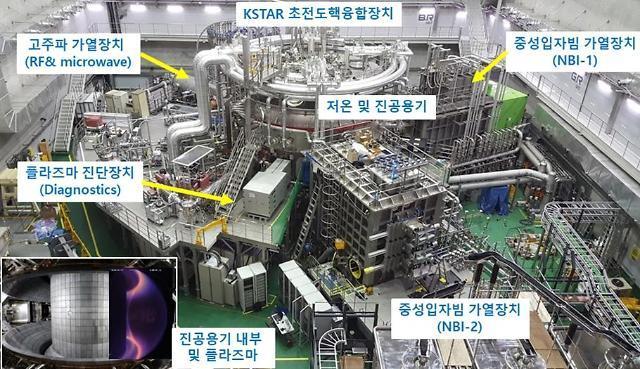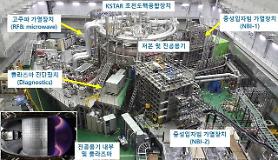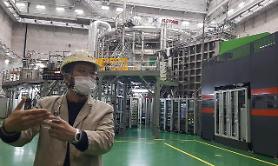
KSTAR is an experimental tokamak device designed to harness the energy of nuclear fusion. Fusion is the process that powers the sun and other stars, where two light atomic nuclei combine to form a heavier nucleus, releasing a large amount of energy in the process.
The tokamak is a doughnut-shaped magnetic confinement device. It uses powerful magnetic fields to confine the hot plasma, which is a state of matter consisting of charged particles, such as ions and electrons, at extremely high temperatures. These high temperatures are required to initiate and sustain the fusion reactions.
South Korea's National Fusion Research Institute (NFRI) said that researchers successfully completed the upgrade of the artificial sun device to secure the technology for prolonged operation at an ultra-high temperature of 100 million degrees Celsius. The newly upgraded diverter, a key component of the KSTAR fusion device, was made using tungsten material. The new upgrade will create a new environment for KSTAR's plasma experiment.
A diverter is a plasma-facing device located at the bottom of a vacuum confinement vessel, where the intense heat flux of the plasma is generated. The diverter acts as a shield to prevent direct contact of plasma heat flux with the vacuum vessel. It also serves as an outlet for various impurities generated during the fusion process, helping the fusion reactor to maintain high plasma performance.
To sustain a prolonged ultra-high-temperature plasma, it is crucial to secure a divertor with excellent heat-resistant capabilities that can withstand the increasing thermal energy proportional to the plasma's operating time. Previously, the KSTAR device had a carbon-based divertor but the fusion reactor's operation involving temperatures of more than 100 million degrees Celsius and increased operation hours pushed the limits of the carbon device. The prototype of the tungsten diverter was made in 2021 and the installment of the new diverter was kicked off in September 2022.
"The KSTAR device, regarded as the most similar to the International Thermonuclear Experimental Reactor (ITER), now features a diverter environment with the same tungsten material as ITER," NFRI head Yoo Suk-jae said in a statement on December 14. "The global attention is now focused on KSTAR's plasma experiment, which can predict the success possibility of ITER's plasma experiment in the future," Yoo said.
In November 2021, KSTAR succeeded in the operation of a super-hot, high-performance plasma with an ion temperature of over 100 million degrees Celsius for 30 seconds, holding the world's longest record. NFRI's goal is to challenge and achieve a 300-second operation by 2026.
Copyright ⓒ Aju Press All rights reserved.



